Destructive Creations is a hard studio to pin down. You can never know what its next game will be, but you can bet that it’s going to be provocative at least in some way. And War Mongrels is no different, especially if you’re reviewing it from Lithuania.
The game starts in 1944 with two Wehrmacht soldiers, Manfred and Ewald, being trucked to a suicide mission as part of a penal unit (a reminder that the “famous” Soviet penal units were inspired by the German ones) — that’s where they ended up due to falling out with the Nazi war machine. Due to a very lucky artillery strike, they’re set free. After their escape, they see… things that make them take up the fight against their former comrades and join the Polish Home Army — Armija Krajowa. They all make friends along the way while shooting, stabbing, killing Nazis.
Every Nazi suffers from terminal near-sightedness
War Mongrels is an isometric, real-time, stealth-tactics game along the lines of the ancient Commandos series. You have a map full of Nazis — some are stationary, some are patrolling. You can see their vision cones, and you have to reach your goal by avoiding or killing everything and anything that stands in your path.
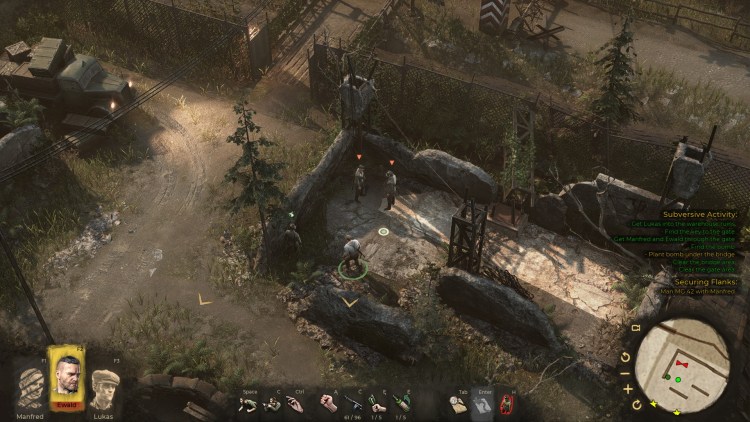
It’s not widely known, but the SS only recruited attentive conversationalists, ones who would focus on the person they’re talking to so strongly that they would develop severe tunnel vision.
However, War Mongrels adds a few new things to the traditional mix. The enemy vision cone has two parts: the solid-colored maximum awareness part and the striped one which doesn’t detect low-laying objects. The awareness ranges can change depending on movement or environment. This is very important because you can safely crawl through the striped area… and also leave corpses there. There is logic in this; if the enemy doesn’t notice your characters crawling around, they won’t notice corpses that occupy about the same amount of space.
You are also provided with a tool to mark a spot and it will show every time an enemy looks at that spot. It is vital for scouting the area and planning how to take out sentries. You can even use it to time a knife stab when the enemy isn’t looking. By the time their vision cone sweeps back, their comrade will be an undetectable corpse!

While combat SS units featured quite a few commanders willing to just charge into fire, the ones in Einsatzgruppen were even dumber.
Of course, you don’t always have the luxury of enemies sweeping the area with minimum awareness cones. That’s why War Mongrels features a lot of spots to hide corpses. No barrels, but quite a few bushes, sewer hatches, closets, trucks, and houses. Your characters can easily (and pretty much instantly) travel between connected sewer entrances, and the same goes between house doors. Yes, some houses in the game are real and enterable while others just serve as a hub to connect two doors.
How do you like the taste of your own Auftragstaktik?!
As for the business of helping a Nazi transform into their final form (a corpse), the variety dwindles a lot. Quite often, this will be a simple question: do you have a character that can throw a moonshine bottle (Ewald) or smokes (Lead)? If the answer is “yes,” then the majority of the Nazis in the level will die after having been lured out of their position by a suddenly appearing bottle of Ground Hooch or Floor Cigarettes. The big snag here is when two guards are chatting, because then they both will go for the treats.
But, that’s why the planning mode exists. Press Tab and War Mongrels will go into bullet time (not a pause) where you can give a single order each of your troops. You use this to set up synchronized kills like you’re playing Ghost Recon Future Soldier. It can be as simple as coordinating stabbing two conversationalists at the same time or having one dude break the neck of a guard going for a spontaneously generated bottle of booze while another character shoots the officer witnessing the first one (officers are immune to the distractions).
Oh yes, shooting. Weapons and falling corpses make noise (and unlike knife-equipped characters, Ewald is the only one who learned to kill an enemy in CQC without letting them alarm the entire neighborhood), so both of those have to be considered when going loud. Since the game very clearly illustrates the radius of sound and shows who’ll hear what, you can do some real gamey pixel-bitching to find the ideal spot where a pistol going off won’t alarm any of the troops surrounding you.
There are also accidents you can stage, some of which (crates on cranes, usually) can be activated by shooting them instead of manipulating them with a character. Yes, you get to unleash a truck under repair on some unsuspecting fascists pretty early on.
About as reliable as the Panther’s final drive
Unfortunately, shooting is also one of the areas where War Mongrels’ enemies are easily alerted. If memory serves, Commandos 2 allowed you to set up a character with a ranged fire kill zone. In this game, you activate an ersatz Men of War direct-control mode. It doesn’t quite work since characters left to their own devices will bug out more often than not. And even when you’re using it yourself, you’re not doing free fire — you can move more with WASD while still having to click on enemy targets to shoot them. It can get you out of a hairy situation or two, but it is in no way a reliable tool.
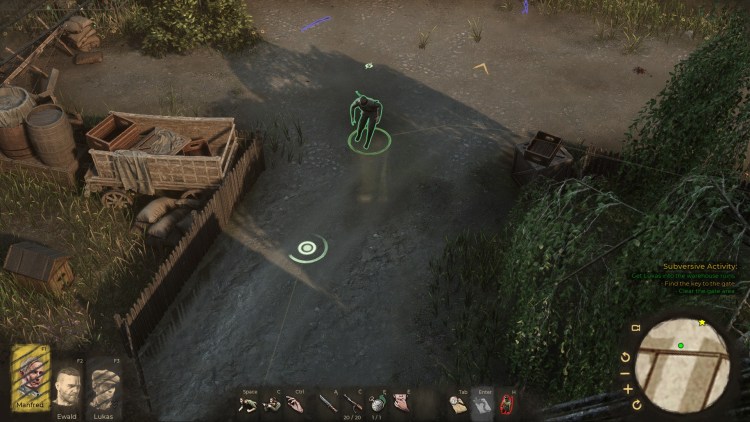
This is an invisible wall I encountered very early in the game. The thin line shows the route Manfred would take.
And that’s the perfect way to segue into my main overriding issue with War Mongrels: the bugs. Launch day saw two patches pushed. They fixed one — or possibly two, but related — game-breaking bugs from one particular level. In this level, you start off with a barely interactive prison experience with multiple minutes of grinding edgy enemy monologue you can’t skip. You then get locked up back in your cell, but the guard outside doesn’t leave.
He should, since the level relies on you picking the lock to escape — and you literally have no other tools to do anything. You can’t do that while he’s staring at you. You can try playing with another character, but he’s physically incapable of interacting with the first character’s half of the level. After hours of trial and error, my main guess is that the bug is triggered if you save and load the game. Wonderful.
The writing has issues, but it’s not Mein Kampf
But, what are my gripes outside these technical issues that can be patched out? Well, I already mentioned how reliant War Mongrels is on lures and stabs, but that’s a minor complaint: even at a distance and isometric perspective, it is satisfying to stab Nazis. A bigger issue is with the writing — in all ways you can interpret that word.
First of all, something that anyone will notice: the character dialogues. There’s definitely a lack of grace going into everything (including tutorial messages). But, it’s the other kind of bad writing, the edgy and overwrought (when not veering straight into historical exposition) that makes character dialogues, especially the banter between Manfred and Ewald, so dreadful. The same could be said about the abusive guard in the prison I mentioned: yes, Nazis were (and are, since some people can’t learn from history) terrible, but when you combine them with the purposefully gritty voice acting, it falls apart immediately. And I had to listen to it 10 times because it’s an unskippable part preceding a game-breaking bug.
Put a pin in the voice acting part for later, we’re still talking about writing. That’s because a few parts of the game take place in or near Lithuanian territories, and you’re playing characters who are working with Armija Krajowa. Now, you probably don’t know this, but Lithuanian and Polish relations in the interwar years could be described as “tense” if you’re someone terminally addicted to understatement.
And as with any partisan movement, we have difficult relations to the Polish Home Army, especially when it comes to conflicts drawn along ethnic lines. Granted, War Mongrels is doing its level best to toe the line, not dehumanizing anyone or casting a blanket statement on entire nations of people. The shots it takes at Lithuanians — or rather Lithuanian collaboration with the Nazis — are 100% deserved and right. The Ponary Massacre depicted in the second level is only inaccurate in the shape of the killing pits.
In the end, the decisions made are questionable in the lightest sense of the word, in that they’re a discussion about the depiction of the AK (especially since some of the game’s collectibles short lessons on history written specifically about the subject) that can be had without fists starting to fly. It’s a discussion that any game depicting a historical partisan movement, especially during World War II, will engender. After all, it was very a much a question to bring up when playing Partisans 1941 as well.
Now, back to what I mentioned about voice acting. I have very little issue with Lukas, the Lithuanian who has only ever lived among Lithuanians (and Poles), speaking with a perfect English accent. No, the real bad choice in the game is casting Doug Cockle as Ewald. Doug Cockle is the voice of Geralt of Rivia, and while his role as the narrator in Tails of Iron was great, it’s absolutely the wrong choice here. I can’t help but hear Geralt every time that Ewald speaks, and it’s especially frustrating with some of the dumber dialogues.
Destructive Creations went all out on the visuals of the game, and the artistry level is great. The levels in War Mongrels are rich in artistic detail and crafted with love. It’s not just about hanging corpses on every lamppost to show Nazi atrocities, it’s about the way search lights cast shadows or how you can see moths fluttering around the night lights. It’s about the thin whist of cigarette smoke following Lead around and the luscious greens and yellows of a farm in summer. The environments are downright beautiful and the character portraits are well made — it’s just a shame about the technical aspects of the game.
Should have delayed the launch, November is empty anyway
All in all, War Mongrels is a flawed title that set out to tell a story of flawed people getting caught in the middle of a disastrous war. Some of the issues can be patched out — Destructive Creations is, after all, a competent team, that much we learned from Ancestors Legacy. However, I can’t say that the game was released in the best state, and some of its issues — basically anything to do with voice acting — can’t be addressed. A shame, because it really looks like a labor of love.

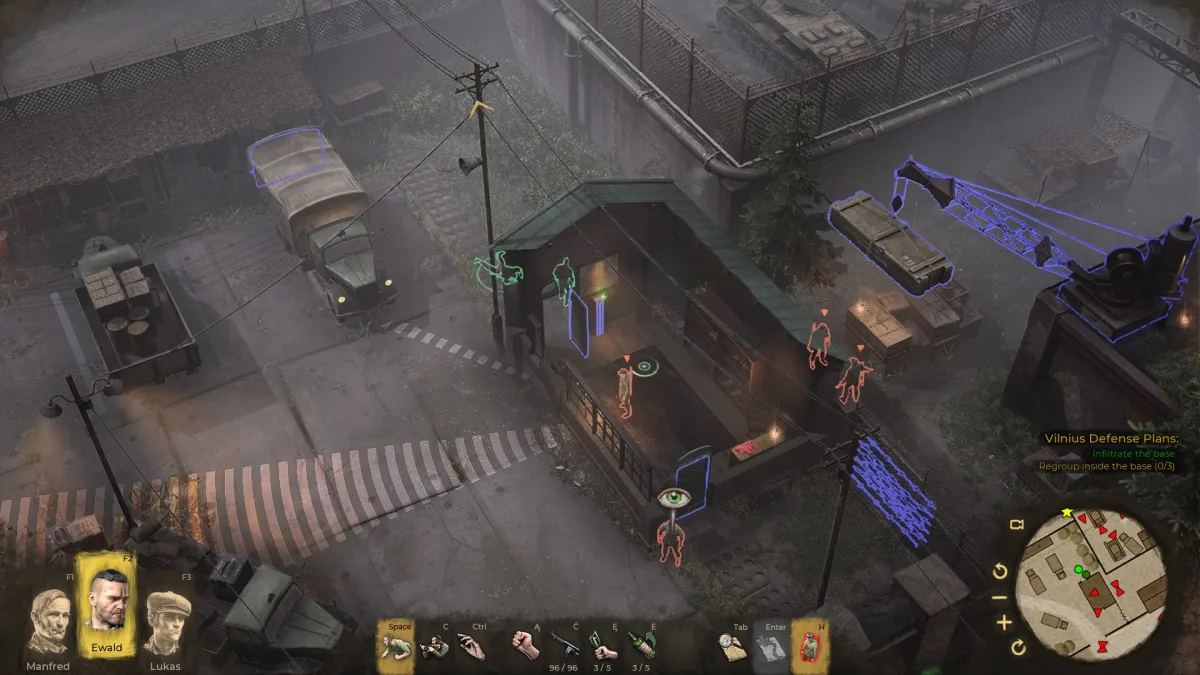

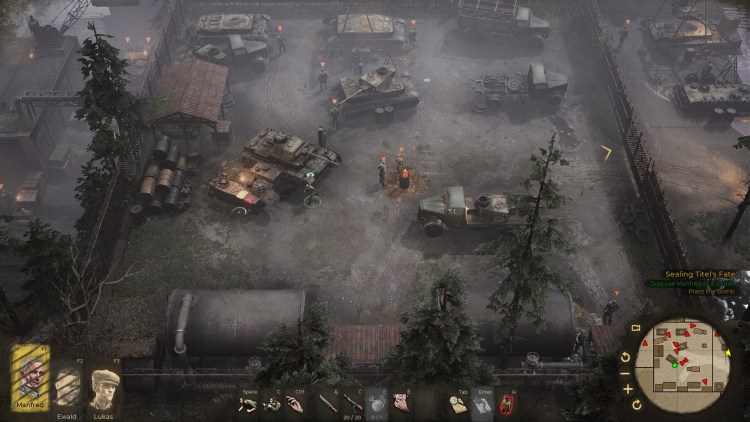
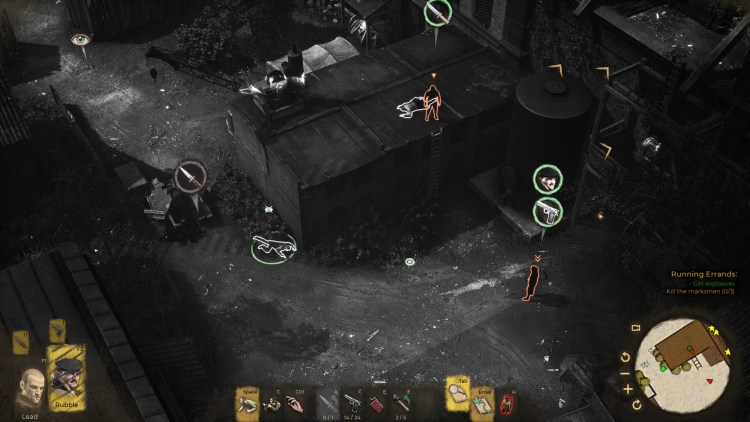
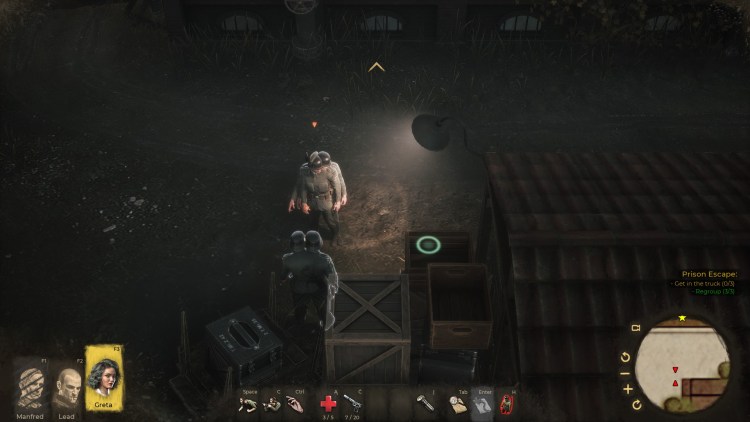
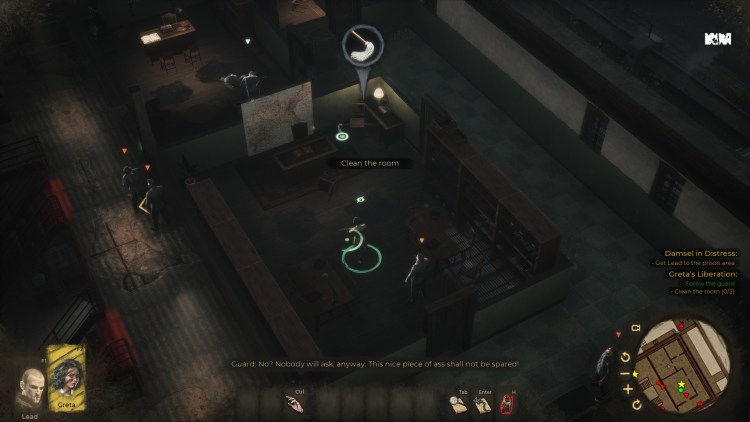
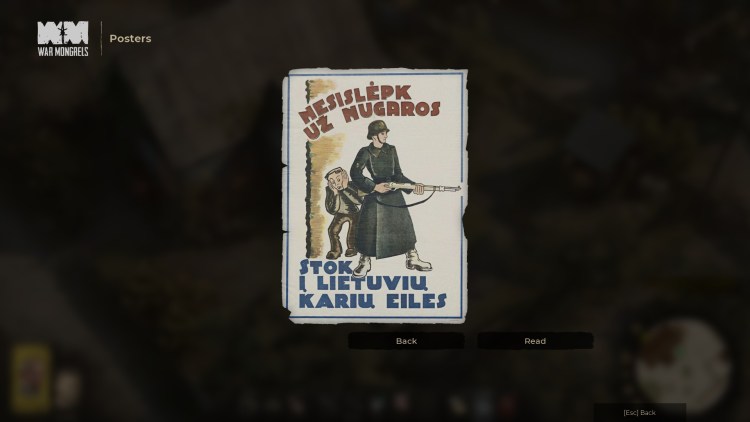
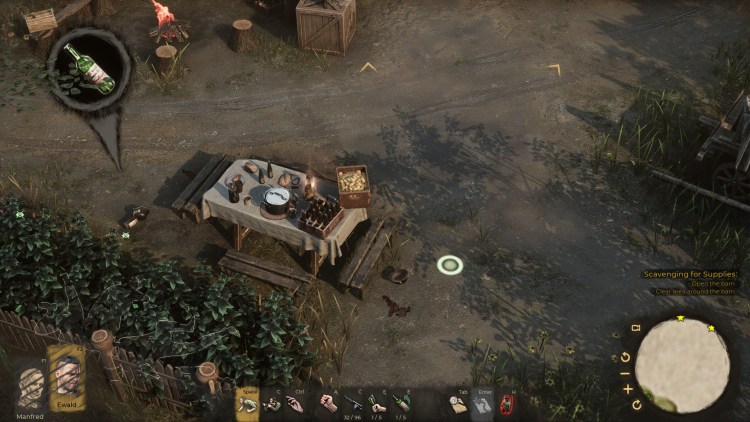





Published: Oct 20, 2021 7:30 PM UTC